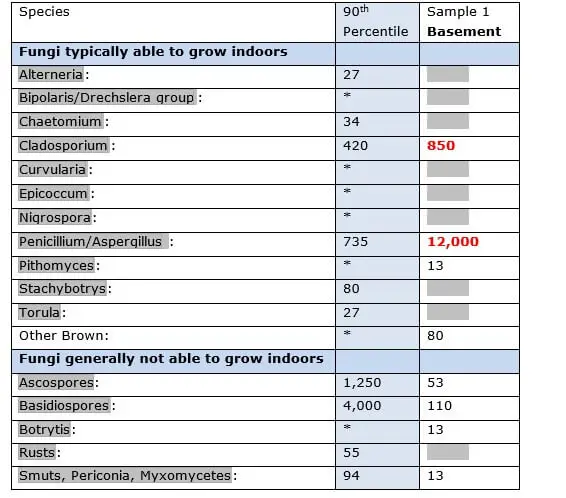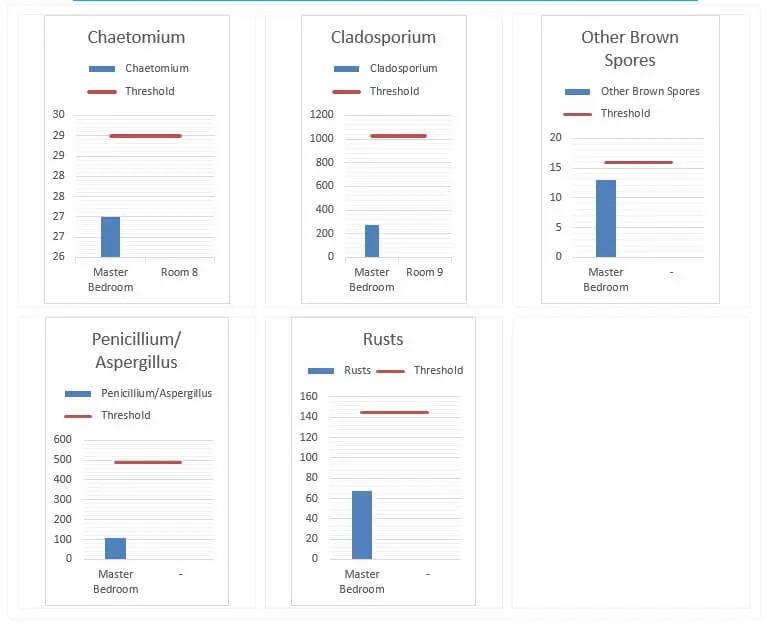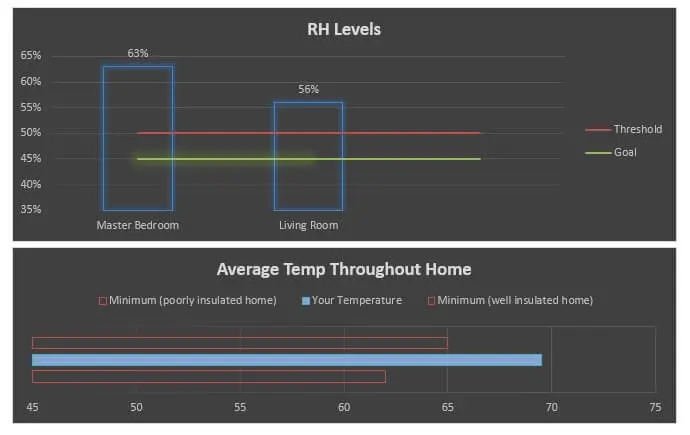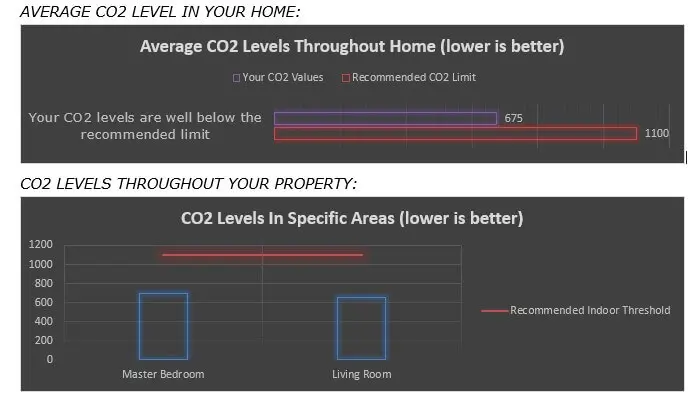Mold Inspection Reports from Burien
Below are recent mold inspection projects we’ve completed in the Burien area. These reports can help provide you with an idea of the issues we typically encounter in your region.
Project Type > Mold Inspection on Construction for Home in Burien
PROJECT SUMMARY
REASON FOR INSPECTION:
- The owner of the house found mold growth on the inside of the sheathing during the construction of the basement. He would like to know if the treatment they applied was effective in killing the mold.
PROPERTY DESCRIPTION:
- This single family 2 story residential property was built in 2015 and is 2,360 ft².
CAUSE OF MOLD:
- The sheathing got wet from rain during the construction of the basement and did not dry out quickly enough.
JOBSITE PHOTOS
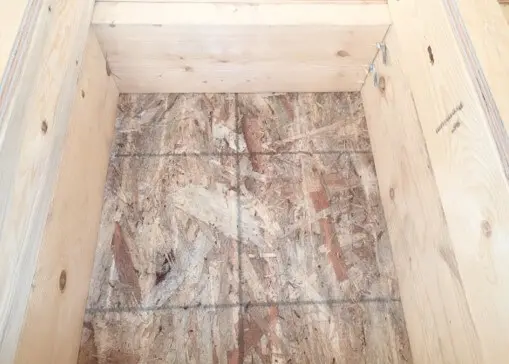
Mold Growth on Sheathing
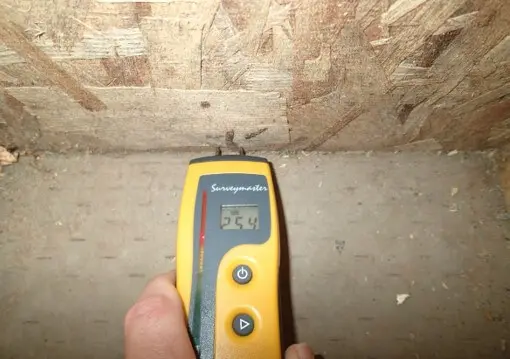
Elevated Moisture Higher at Bottom of Wall
OBSERVATIONS
LOCATION: Basement
- Client reports mold growth on walls. The mold has already been cleaned up with bleach.
- Elevated moisture detected in East wall. This moisture is the result of rain during construction and this water intrusion source has been stopped.
General Recommendations:
- The homeowner will install cadet heaters and heat the basement for dryout.
- The mold has already been treated. The mold will not return if the basement wall is dried out quickly.
- Bring the walls moisture content to below 20% as measured by a moisture meter prior to installing insulation in these walls.
Project Type > Basement Inspection after Water Intrusion in Burien
PROJECT SUMMARY
REASON FOR INSPECTION:
- Clients are concerned with minor water intrusion in the basement as well as a musty odor. Environix hired to inspect the basement to find the source of the water intrusion and the odor.
PROPERTY DESCRIPTION:
- This single family tri-level residential property was built in 1946 and is 2010 ft².
LABORATORY RESULTS
ANALYSIS OF YOUR RESULTS:
- Extreme Amplification: Mold spores were detected at levels many times greater than the threshold, indicating a site of high mold amplification and growth. Please refer to the attached report for more detailed information.
The most likely contributor of the elevated mold spores is:
- Vapor emissions.
- Recent water intrusion.
Recommendations:
- Due to the elevated levels of mold spores, the operation of a commercial HEPA air scrubber is highly recommended. This will rapidly lower the indoor mold spore levels. Please contact Environix for pricing.
JOBSITE PHOTOS
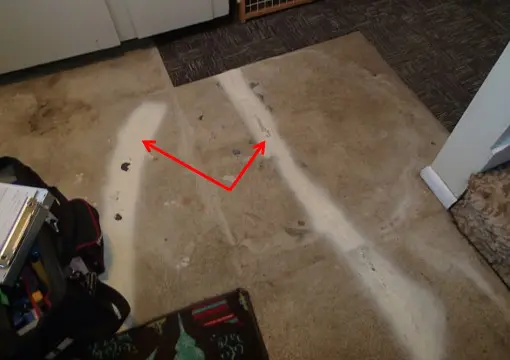
Client has tried sealing cracks but water still seeps through
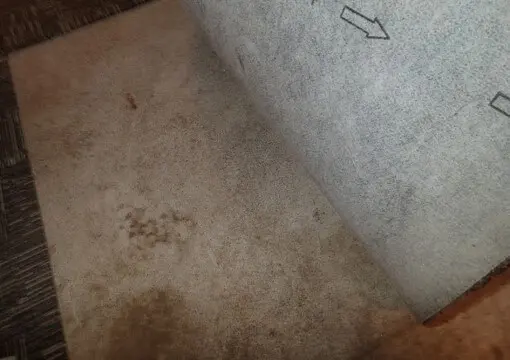
Slight musty odor underneath carpet tiles
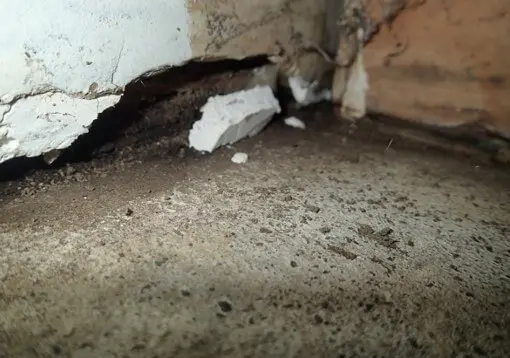
Water damage and sediment found under shelve
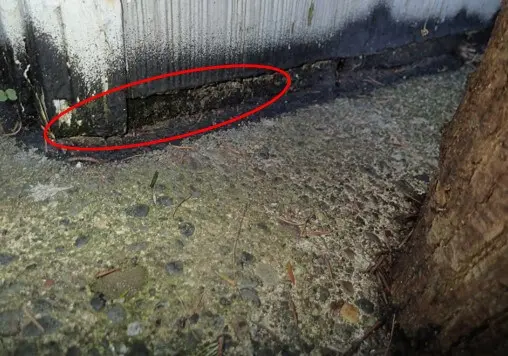
Point of water intrusion on exterior
RELATIVE HUMIDITY & CO2 READINGS:
 LOCATION: Basement
LOCATION: Basement
GENERAL OBSERVATIONS:
- Client reports they installed carpet tiles over their concrete slab approximately 5 years ago.
- Client reports that near the basement entry, the tiles were damp and smelled musty. There is a crack in the concrete in this area, which the client has attempted to seal. Client has reported visible moisture coming from these cracks in the slab.
- Evidence of vapor emissions. Vapor emissions in carpeted rooms often lead to highly elevated levels of mold spores. Vapor emissions can be extremely difficult to eliminate. Lower-cost alternatives include leaving the concrete slab exposed, or installing a more durable material such as tile. These solutions allow the vapor to quickly move into the airspace, which can then be eliminated through ventilation.
- Evidence of recent groundwater intrusion. A shelf near the front door shows signs of water intrusion at the floor joint. This is due to rain water collecting on the side of the home.
General Recommendations:
- All carpet tiles should be removed, there is good reason to believe vapor emissions is occurring in more spots then just the entry way. All of the tiles could be holding mold spores from vapor not passing through the carpet tiles fast enough.
- If carpet tiles are desired to be re-installed: Re-seal the entire concrete floor and clean the carpet tiles. Carpet tiles should be thoroughly cleaned and dried fast before they are re-installed.
- If water is observed intruding through cracks in the slab after attempted sealing, contact a flooring contractor to investigate and seal.
- Recommend removing the bottom board of the shelves and sealing the floor joint on the interior and exterior.
- Ensure water is draining away from the house. Observe this area during periods of heavy rains to ensure the leak has stopped.
- Run a HEPA scrubber in the basement during clean up and removal of carpet tiles. This will help remove air borne mold spores.
- Increase ventilation in basement to help dilute the air and remove mold spres.
RAW LABORATORY RESULTS
Individually, the following types of mold spores were identified in your samples.
*results shown in spores/m3. The following data is typically based on a 2-3 month rolling
Project Type > Mold Inspection for Home after Recent Roof Leak in Burien
PROJECT SUMMARY
REASON FOR INSPECTION:
- There has been a leaky roof issue above the master bedroom that is now causing odors in the home. Environix hire to inspect the area of concern as well as collect an indoor air quality sample while onsite.
PROPERTY DESCRIPTION:
- This single family residential property was built in 1939 and is 1,950 ft².
CAUSE OF MOLD:
- Mold is caused from roof leak affecting below building materials.
LABORATORY RESULTS
ANALYSIS OF YOUR RESULTS:
- No Amplification: No mold spores were measured at levels equal to or above the threshold, and do not indicate a site of probable mold amplification and growth. Please refer to the attached report for more detailed information.
JOBSITE PHOTOS
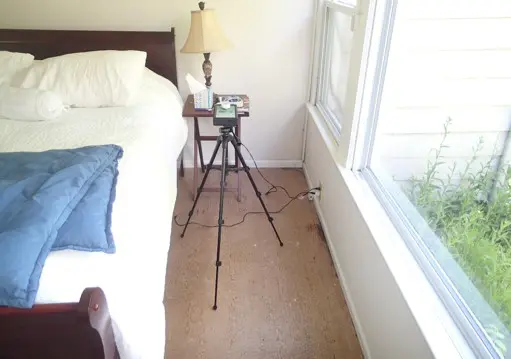
Air sample collected in master bedroom
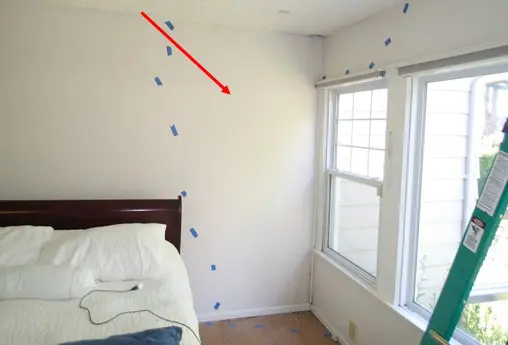
Area where elevated moisture was detected with moisture meter
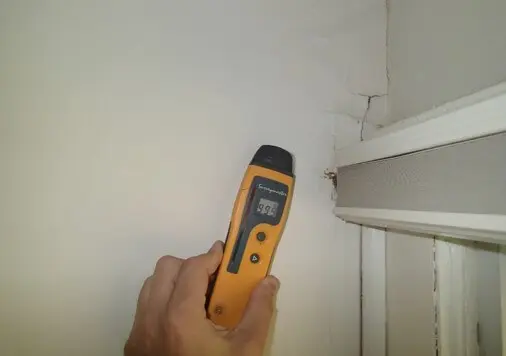
Wall in master bedroom has been affected by above roof leak
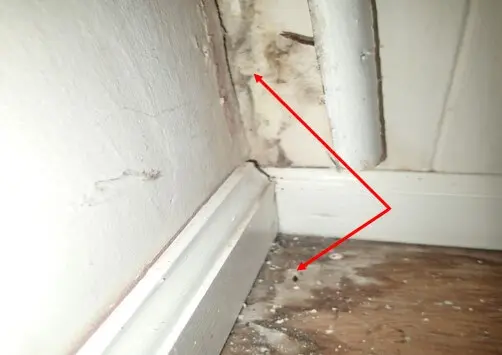
Mold found on flooring and behind wall trim
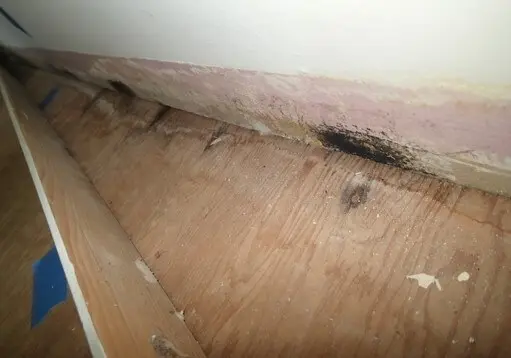
Mold found behind baseboard in master bedroom
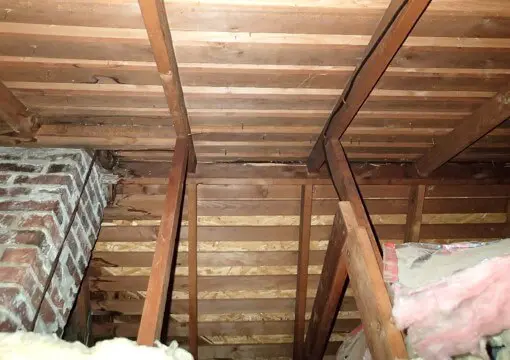
No mold noted in attic
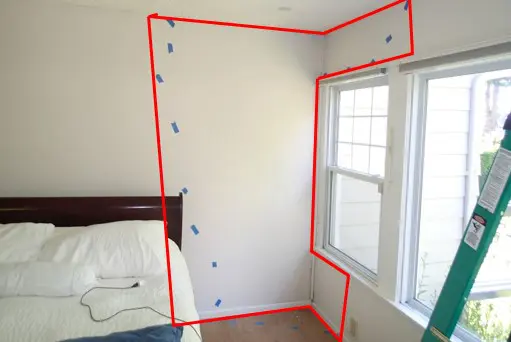
Section of affected drywall that should be removed to treat mold
RELATIVE HUMIDITY & TEMPERATURE READINGS:
CO2 READINGS:
LOCATION: Master Bedroom
Observations:
- The bedroom is equipped with double paned vinyl windows with no evidence of condensation or mold problems.
- Light to moderate mold growth was observed on the ceiling, wall, and floor.
- Water stains observed on the wall and floor of exterior corner of the bedroom.
- Elevated moisture detected in the wall, ceiling, and floor. The ceiling is very brittle.
- Mold noted behind the baseboards and wall trim in an area of elevated moisture. This is likely the cause of the musty odors the occupants are smelling in the master bedroom. If the mold/moisture issues are not fixed in this wall cavity the odors will not go away.
- The elevated moisture and mold appear to be the result of a roof leak. This leak was recently fixed so this moisture is likely from the water being trapped inside the wall cavity and not drying. Wall needs to be opened up so mold can be cleaned and materials can be dried.
- The client notes that a roof leak was professionally repaired approximately 3 months ago.
- There is no attic access above this room – this part of the home was an addition.
Recommendations:
- See ventilation section above for recommendations to eliminate condensation.
- Professional mold remediation is necessary to properly address the existing mold growth and to prevent cross contamination. During remediation, HEPA filtration, negative air pressurization and proper personal protective equipment must be utilized. Please see included pricing.
LOCATION: Living Room
Observations:
- The living room is furnished with carpeting in average condition.
- Water stains and drip marks were observed on the Living Room wall. No elevated moisture was detected in this area at time of inspection. These appear to be the result of former roof leaks.
- The carpet was pulled back during the inspection. No issues were discovered under the carpet or in the carpet pad and tack strip.
Recommendations:
- Consider repainting with a quality gloss latex paint to cover the water stains.


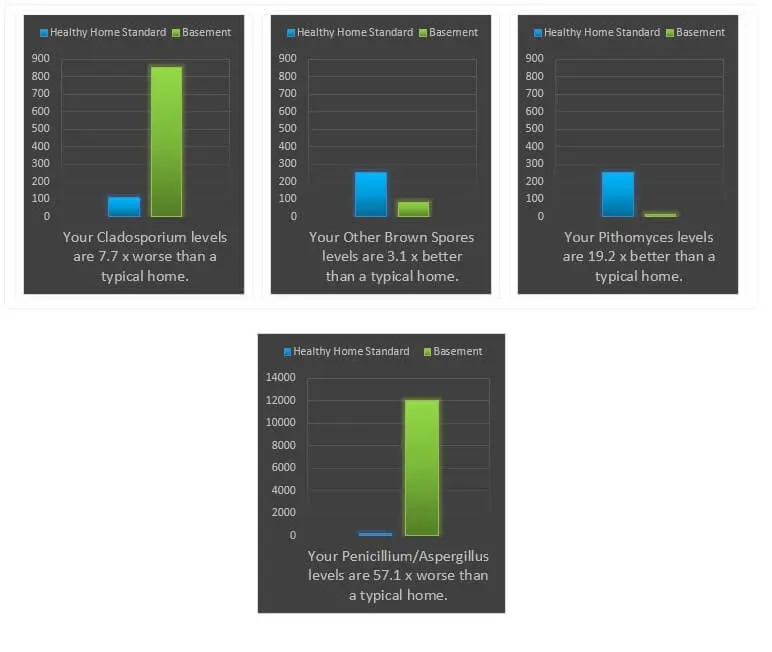
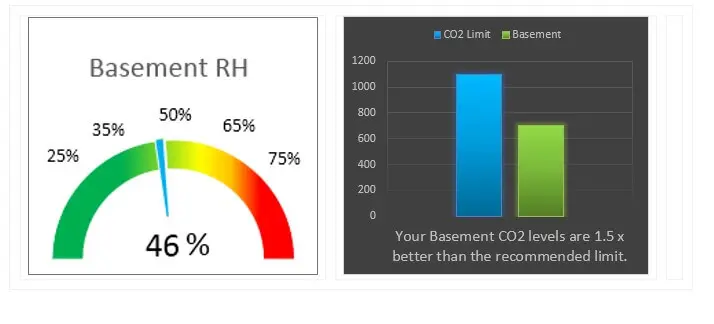 LOCATION: Basement
LOCATION: Basement